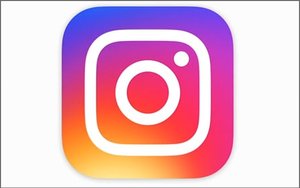 At the risk of offending no one, Instagram on Wednesday debuted a new and supremely innocuous logo. A simplified version of its previous design, the new logo sports a
soft spectrum of blue, purple, pink and yellow.
At the risk of offending no one, Instagram on Wednesday debuted a new and supremely innocuous logo. A simplified version of its previous design, the new logo sports a
soft spectrum of blue, purple, pink and yellow.
“The new [logo] represents a simpler camera and the rainbow lives on in gradient form,” Instagram explains in a new blog post.
As the for new color scheme, it is meant to reflect how “vibrant and diverse” the Instagram community’s storytelling abilities have become.
The look is mirrored in updated
icons for Instagram’s sister apps, including Layout, Boomerang and Hyperlapse.
Along with the new design, Instagram has modified the design of its service. “The simpler design puts
more focus on your photos and videos without changing how you navigate the app,” according to Instagram.
In a video posted on Wednesday, Instagram shows how much time and effort went
into crafting its new logo. And, with good reason. The network has become an important component’s of Facebook’s future.
Indeed, Instagram’s global mobile ad revenues are
expected to reach $2.81 billion -- or about 10% of Facebook's global ad revenues -- by 2017, according to eMarketer.
If accurate, Instagram will by then have higher net mobile display ad
revenues than both Google and Twitter.
The figures are particularly impressive in light of the fact that Instagram only recently began offering more sophisticated targeting capabilities to
advertisers. Last summer, its ad technology finally started leveraging Facebook’s ads infrastructure -- something brands had long asked for
Just this week, Facebook extending the reach
of its Dynamic Ads -- formerly dubbed Dynamic Product Ads -- to Instagram. Dynamic Ads feature products in which consumers have previously expressed an interest, either by viewing them or adding them
to a virtual shopping cart.
At present, Instagram users presently share more than 80 million photos and videos every day.
This year, 89.4 million U.S. consumers will log on to
Instagram at least once a month -- representing 34.1% of all mobile users, eMarketer expects.